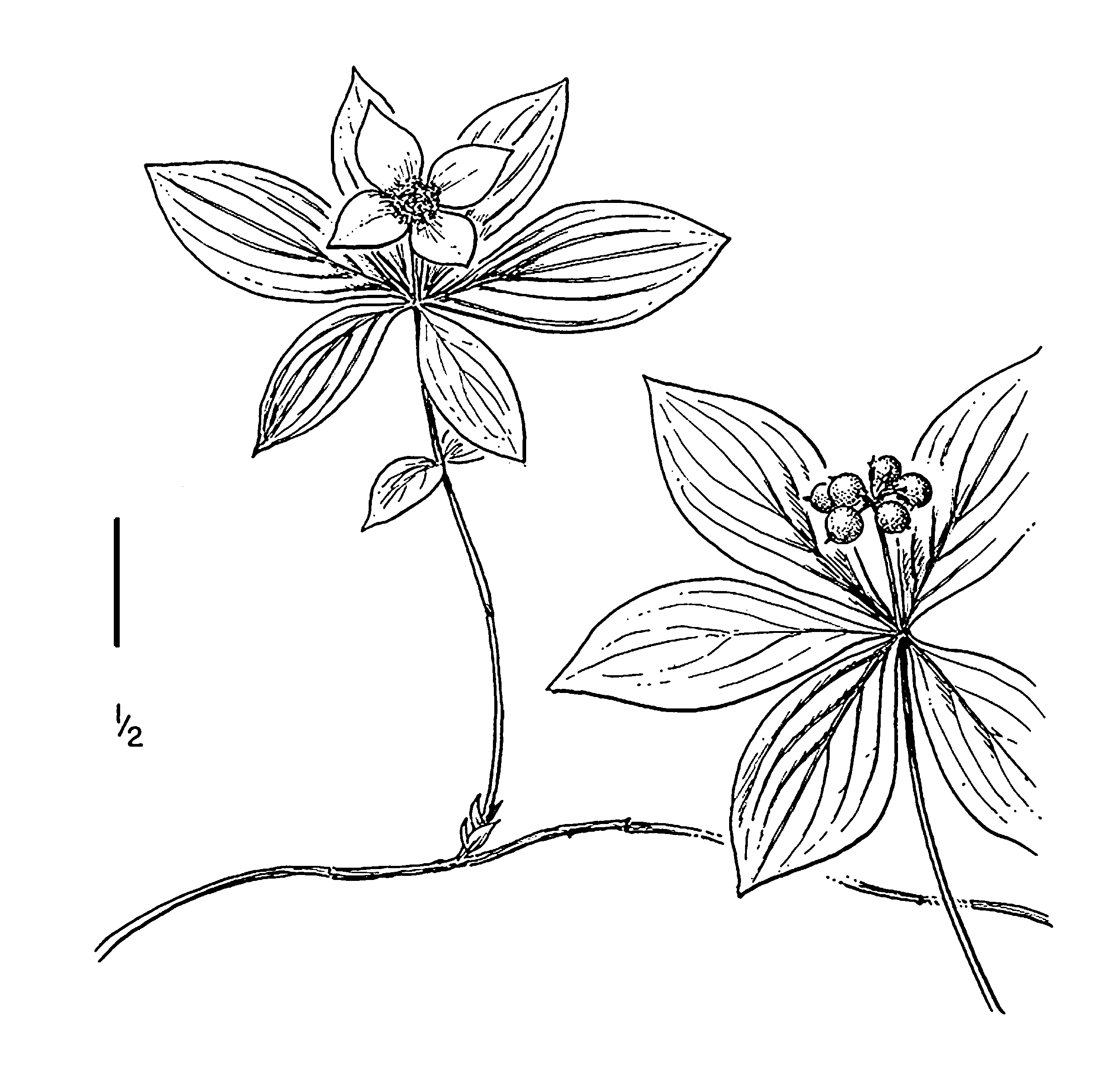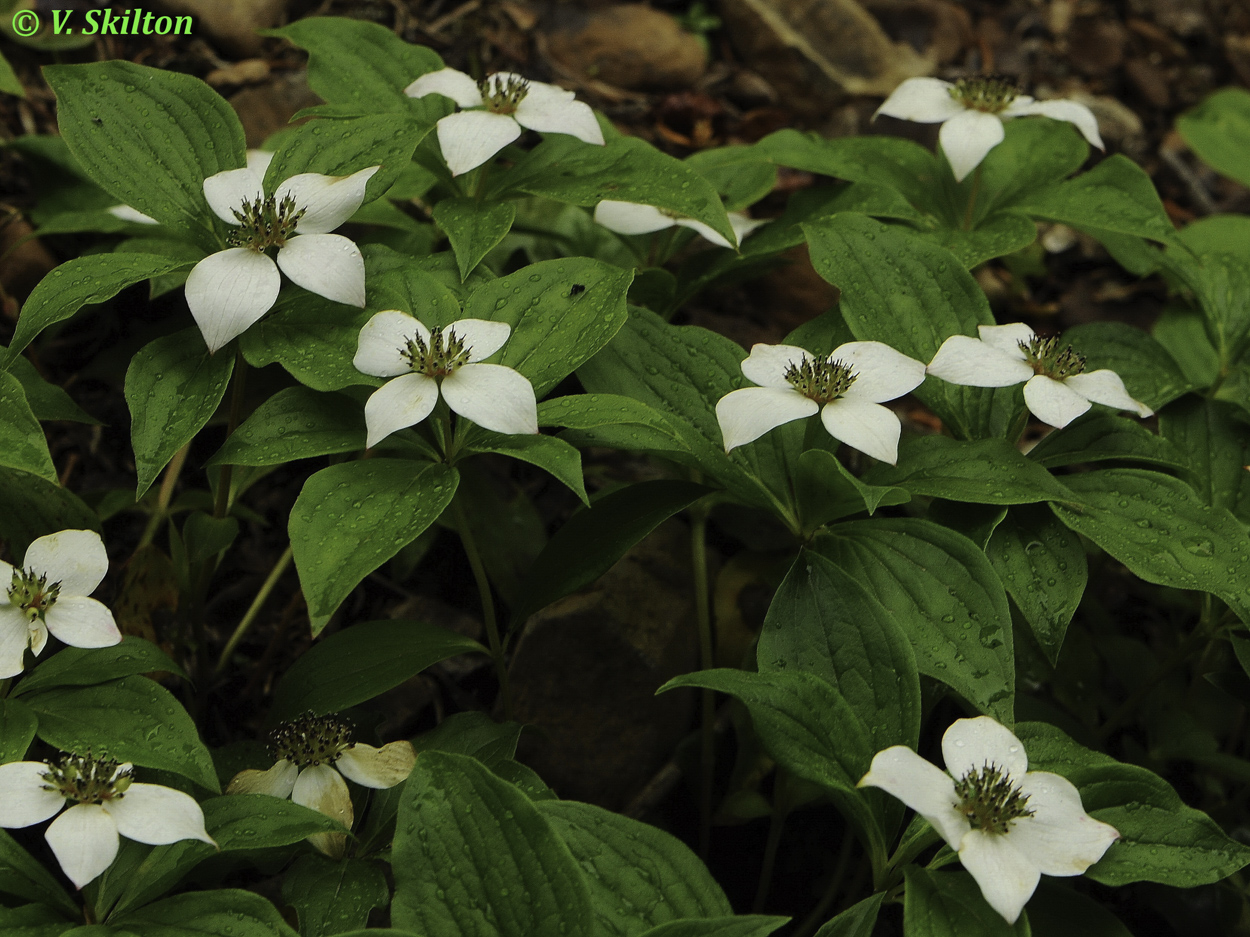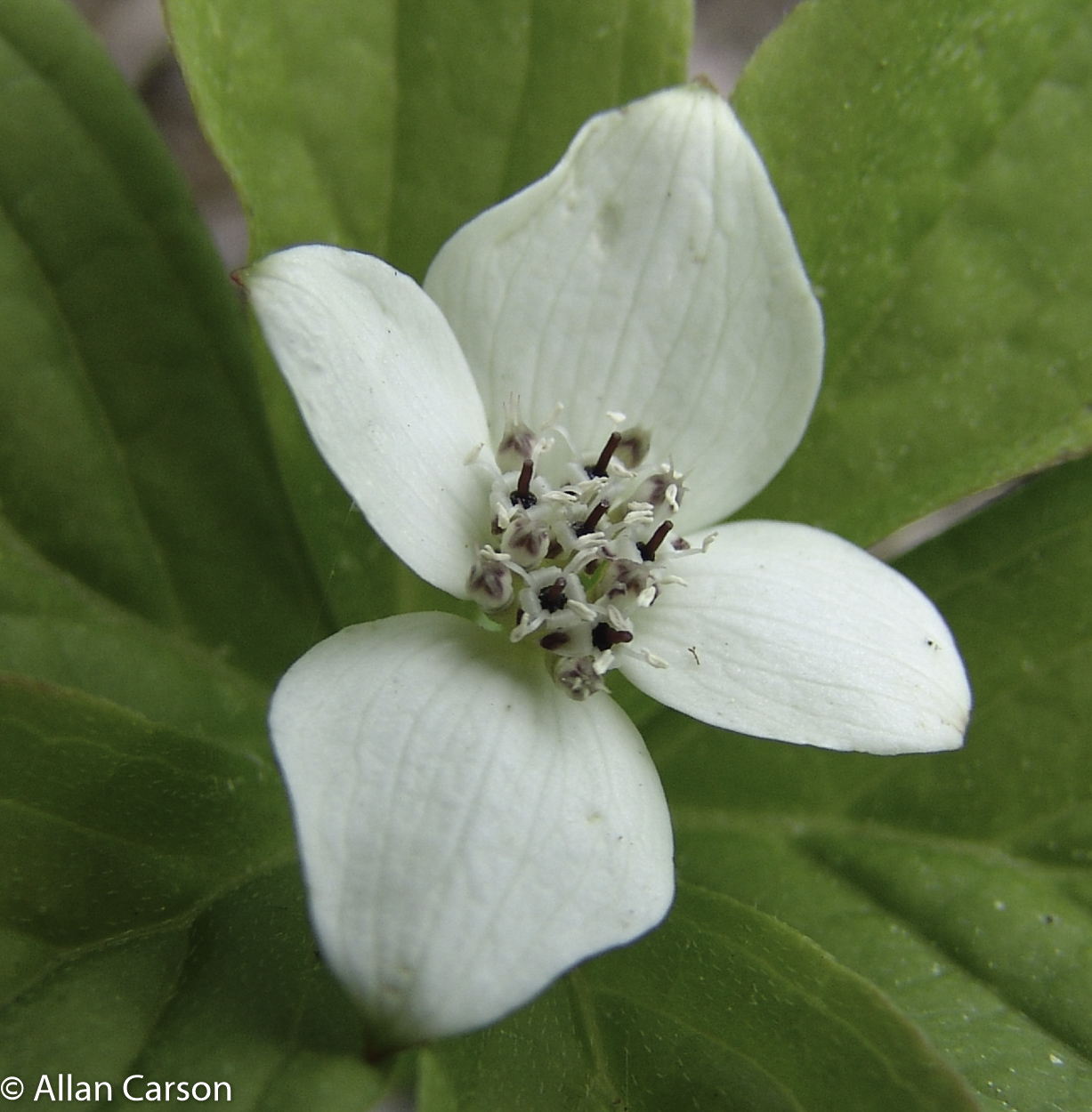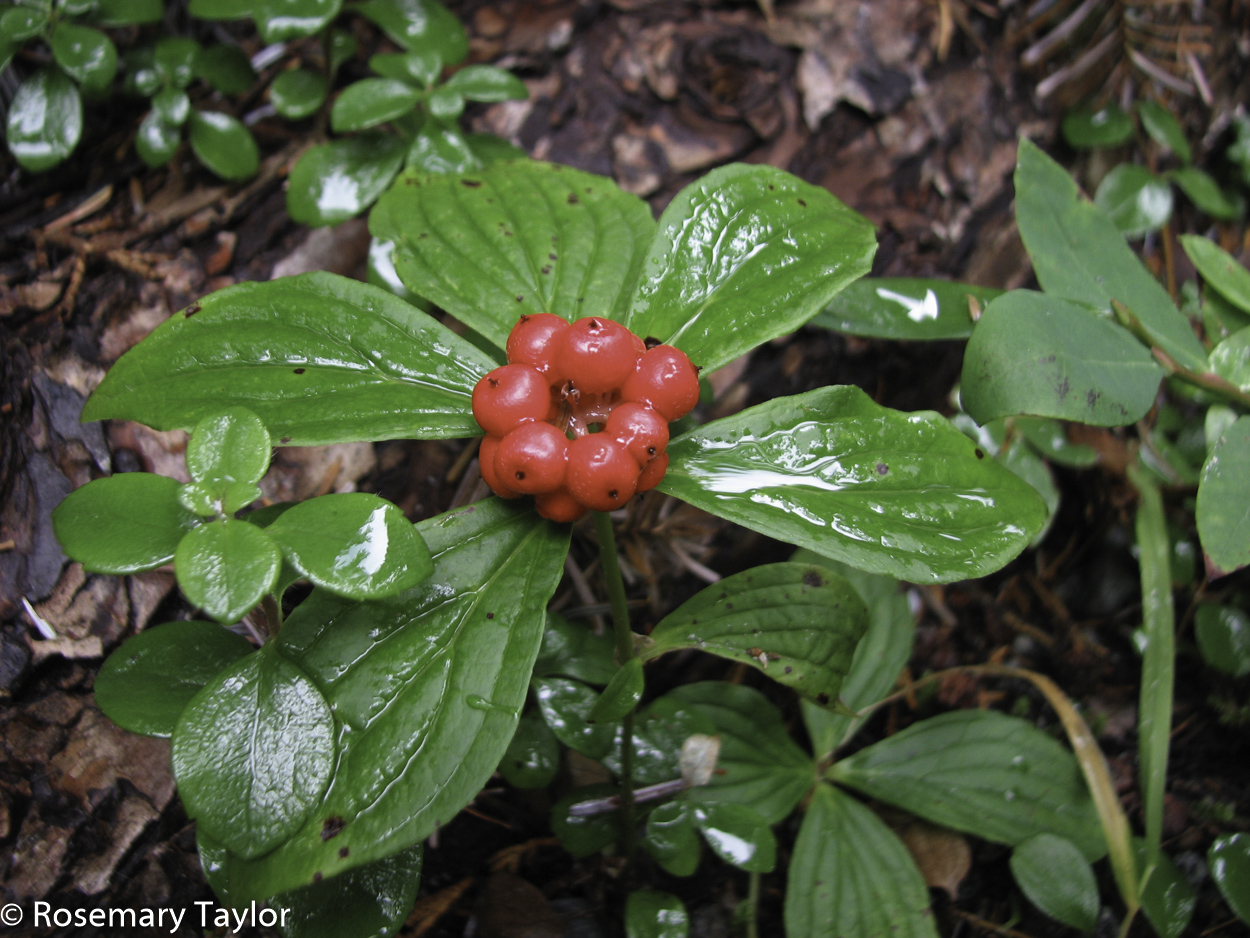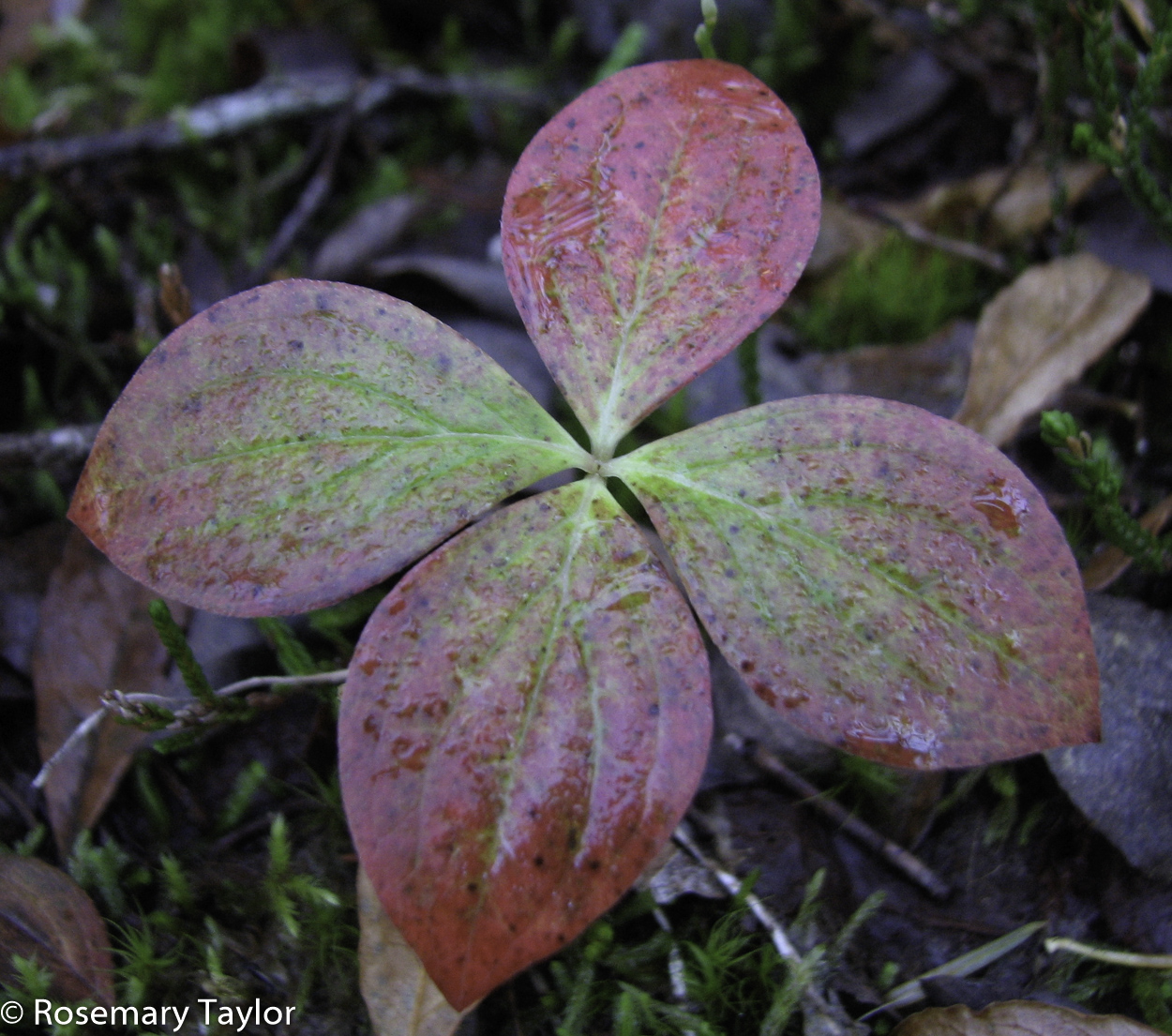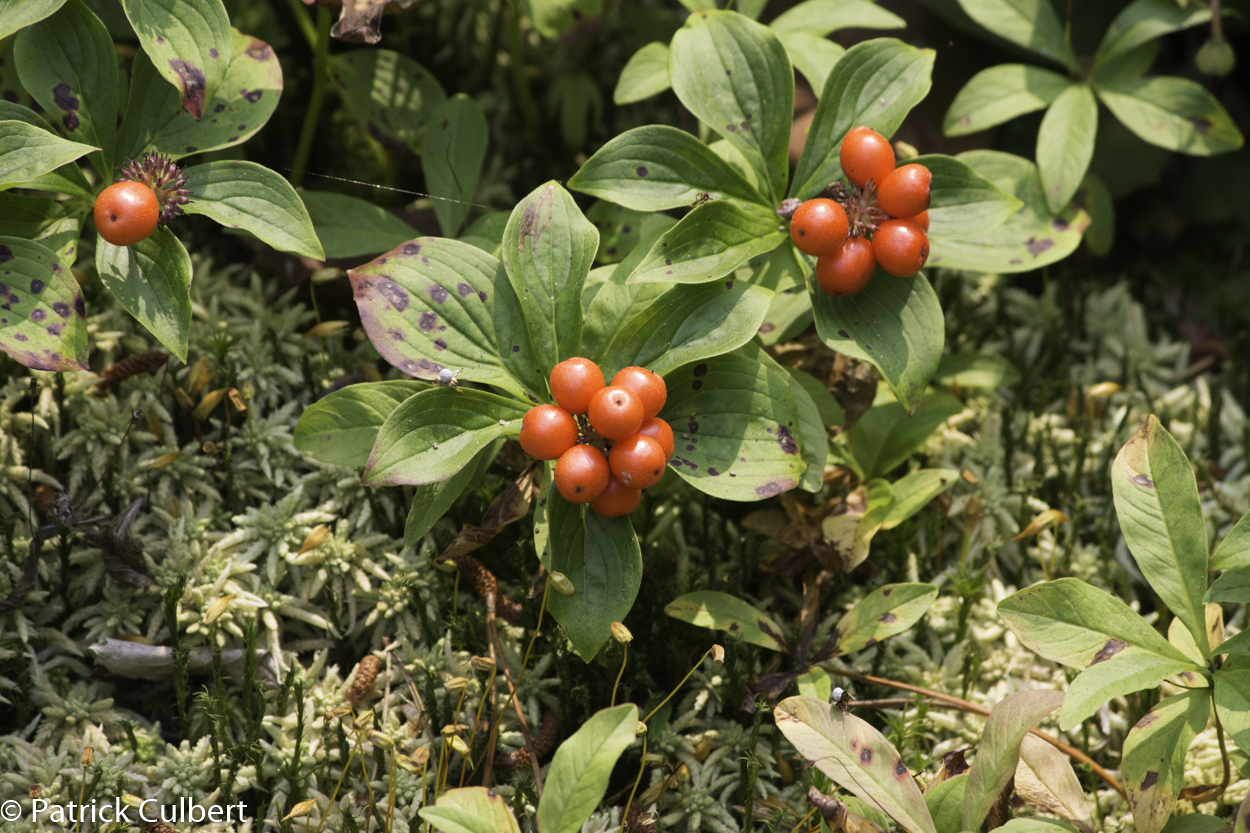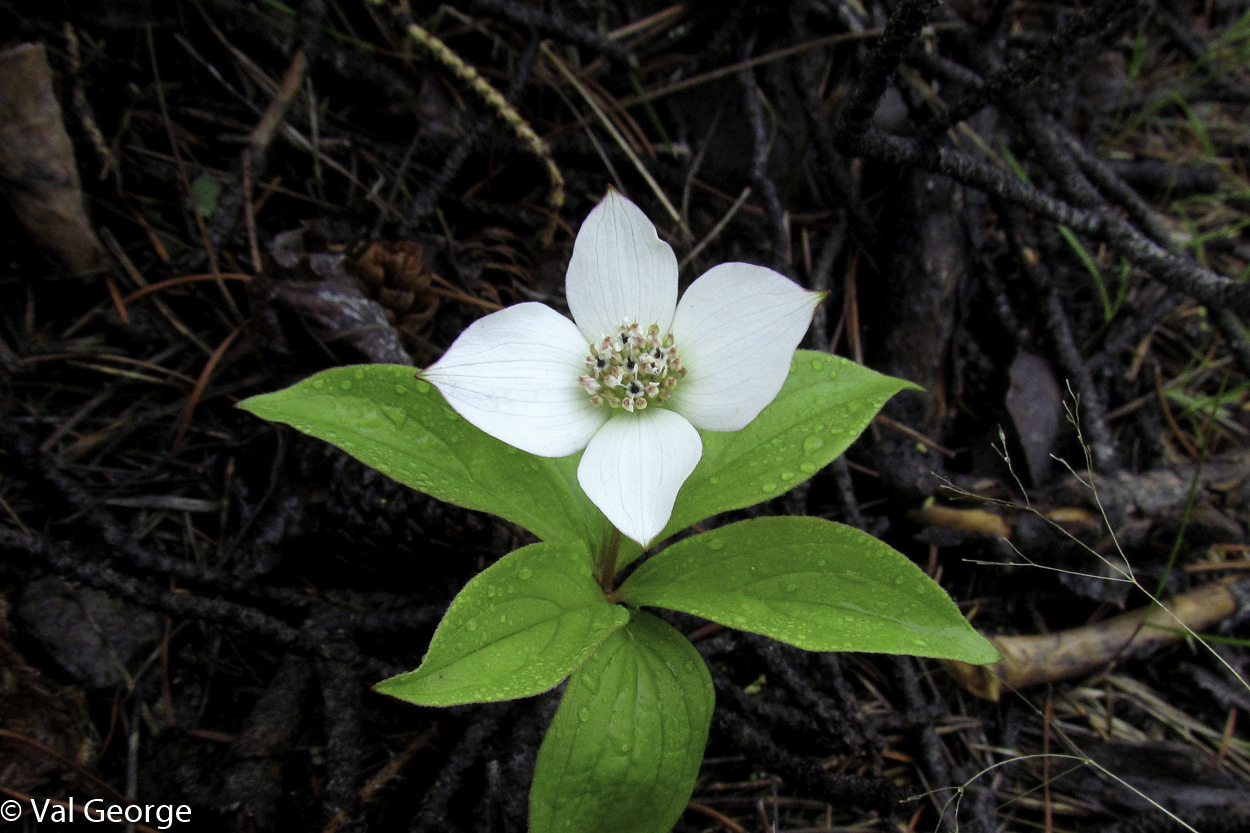Cornus canadensis – bunchberry
Common Name
bunchberry
Alternate Common Names
- Canadian bunchberry
Family
Cornaceae
Scientific Name
Cornus canadensis
Soil Moisture Regime (SMR)
- Moderately Dry (MD)
- Medium (M)
- Wet (W)
Soil Nutrient Regime (SNR)
- Poor (P)
- Medium (M)
Video link
Hitchcock, C. Leo, and Arthur Cronquist. Flora of the Pacific Northwest: An Illustrated Manual © 1973. Reprinted with permission of the University of Washington Press.
General / Habitat
- Unlike most other members of the dogwood family, bunchberry is a creeping, rhizomatous perennial herb (though somewhat woody at base)
- Occurs in moist coniferous or mixed forests, openings, and bogs
- Valley bottoms to subalpine elevations.
Key Identifying Characteristics
- Leaves: 4-7, though typically 6 in a terminal whorl above 1-2 pairs of leafy bracts. The leaves are somewhat evergreen, short-stalked, 2-8 cm long. Like other plants in the dogwood or Cornus genus, the leaves have prominent parallel veins.
- Flowers: greenish white to purplish white, 4 petal-like bracts surrounding a central umbel-like cluster. White petals that you see are actually bracts surrounding the true flower
- Fruit: Bright red, fleshy drupes. A drupe is a type of fruit like a cherry or peach where the outer, fleshy part surrounds a single seed that is protected by a hardened endocarp
External References
Sources
Douglas, G.W. et al (Editors). 1998-2002. Illustrated Flora of British Columbia, Volumes 1 to 8. B.C. Min. Environ., Lands and Parks, and B.C. Min. For., Victoria, B.C.
Pojar, J. and A. MacKinnon. 2014. Plants of Coastal British Columbia Including Washington, Oregon & Alaska. B.C. Ministry of Forestry and Lone Pine Publishing. Vancouver, B.C.

